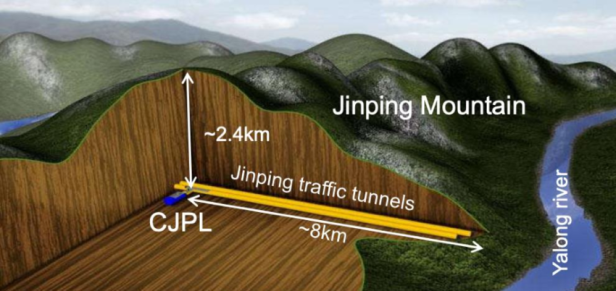Deep inside the Earth, Chinese researchers are trying to uncover its secrets Dark matter To come on the right track. Invisible matter is made 80 percent of matter in our universe, but so far it has only been indirectly proven. With the China Jinping Underground Laboratory II (CJPL-II) That must change.
2400 meters below the surface of the earth
Construction of China's underground Jinping Laboratory began in 2010, followed in 2014 by the construction of the CJPL-II expansion, which was completed in December last year. 2400 meters below the surface of the earth It should be possible to detect dark matter there without distorting the results due to cosmic radiation. 330,000 cubic meters of material It was dug for this purpose.
There is also a similar laboratory in Europe: 1,400 meters below the Italian laboratory Gran Sasso massif There are also researchers looking for individual particles of dark matter. There is already evidence of dark matter there, but the particles have not been directly detected yet.
➤ Read more: How do researchers search for dark matter in space and deep in the mountains?
Dark matter rarely interacts with other matter. When a particle hits Earth, it simply passes through the planet. There, 2,400 meters deep inside the planet, are dark matter detectors Astrophysical xenon experiment (bandax(And the dark matter experiment in China)CDEX) Recording of molecules.
CJPL Laboratory in Mt.
© Creative Commons
PandaX uses the noble gas xenon in liquid form. When dark matter particles collide with xenon atoms, they are created Flashes of lightthat sensors can detect. CDEX, on the other hand, uses a germanium detector through which electrical signals are generated when particles collide with it.
Look for WIMPs
Researchers are looking for what is called WIMPs (Weakly interacting massive particles) – hypothetical particles that could make up dark matter. Although these particles do not interact with other parts, in rare cases it may happen that weakly interacting particles collide directly with an atomic nucleus – such as a xenon nucleus. This can then be recorded by sensors.
However, these particle detectors are so sensitive that they are sensitive to any type of radiation as well Cosmic background radiation – It can excite them. That's why they are found deep underground in thick metal boxes. the CJPL-II will also clarify the question of whether dark matter is actually composed of WIMPs, or rather of other subatomic particles that have not yet been discovered.

“Social media evangelist. Baconaholic. Devoted reader. Twitter scholar. Avid coffee trailblazer.”








More Stories
These brands are most vulnerable to phishing scams
Apple Maps Now Has a Web Version and Wants to Challenge Google Maps
Best AirDrop Alternatives for Android